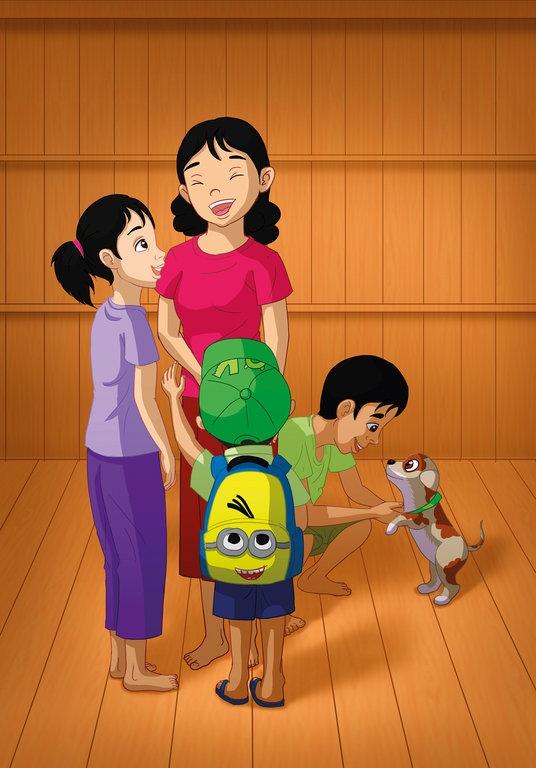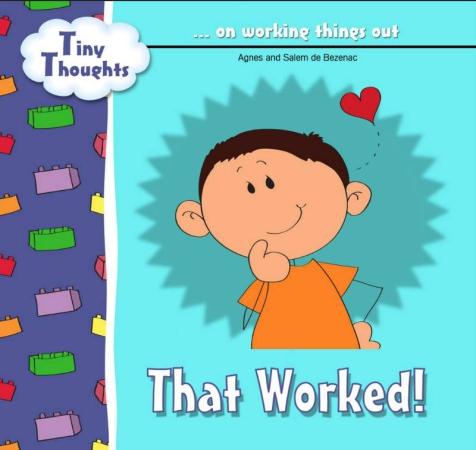











There are four basic skills in any language; receptive skills – reading and listening, and productive skills –speaking and writing. All are equally important and wherever possible we should try to incorporate all of them into our lessons if we want to have a balanced approach. Often we will want to focus more on one particular skill but still bring others in to create an 'integrated' skills lesson.
In this unit we will focus on the receptive skills –reading and listening. This is a shorter unit than most but is still very important.
Read and digest the information completely before completing the worksheet.
When we read instructions as to how to operate a video recorder, our motives for reading are very different from when we pick up a novel by our favourite author; when we listen to directions from a stranger on how to get to the beach, our motives are different than when we listen to our friends telling us a joke.

We can divide the reasons and motives for reading and listening into two fairly wide-ranging categories:
This type of reading and listening takes place because it will help us achieve some particular aim or goal. In the examples above, reading instructions on your new video recorder and listening to instructions are examples of this type of motivation.
Very often we listen to or read information because we find it pleasurable or enjoyable in some way Such as reading a novel or listening to a joke from the examples above.
Quite often our reading and listening may be a mix of the above two motives. We may find reading a tour guide to a particular city to be enjoyable but it may also achieve some specific purpose if we are on holiday in that city So there will be times when our reasons for listening and reading will include both motives.
Most people would say with our eyes and our ears! This may be true but there is more to it than that. Our minds must not only be able to recognize and understand the words but also be able to grasp their overall meaning from a pre-existing knowledge of the world. For example if an American was to walk past a newspaper stand and see the headline 'Bears destroyed by Cowboys', he/she would automatically be able to recognize that this was likely to be a text about an American football game and nothing to do with animal cruelty This would be based upon his/her pre-existent knowledge. A non-American, seeing the same headline and understanding every word might reach an entirely different conclusion.
So we can see that reading and listening are not simply matters for the eyes and ears, but also a matter of using our minds to literally understand words and process them in our 'preexistent knowledge' to gain true understanding.
Readers and listeners employ a number of specialist skills when reading or listening, and their understanding of the context will depend on their expertise in these areas:
For example, predicting the content of an article or dialogue from a headline or introduction.

We often listen or read for specific information. For example, we look in a newspaper to find a football result (we don't read the whole newspaper before finding it!), we listen to the news, only concentrating when a particular story comes up.
This is where we read or listen for the gist of a text/dialogue, we don't focus on every single word but are just trying to get a general understanding of the content.
Sometimes we read in order to understand everything in detail. For example, when reading or listening to detailed directions on how to get somewhere. We need to read/listen in a concentrated manner to gain full benefit.
Sometimes we need to be able to understand or deduce the meaning of individual words or phrases from the context in which we hear/read them. We sometimes also need to see beyond the literal meaning of words. 'You are in a non-smoking zone' isn't intended solely for information but also as an order to not smoke and if you are smoking, to extinguish your cigarette.

The teaching and learning of receptive skills presents quite a number of potential problems which need to be addressed. These are mainly in connection with the language contained in the text, the topic and the tasks the students will perform.
Sentence length, word length and a number of unfamiliar words can also present problems to learners of English. Reading presents fewer problems as the text is 'captured' on paper and students may read it countless times. This gives them the opportunity to think about it or deduce the difficult language from context. Listening is another matter. The language isn't 'captured' and listeners have no time to really deduce the meaning and think about the language, as they hear it only once.
Obviously the more language we expose the students to the more they will learn. Fortunately, there are many ways of approaching language difficulty
One way of helping students is to teach them difficult/unknown language and structures, prior to commencing a reading or listening activity This should at least help to remove some of the obstacles that they are likely to come across. However, if students never get past the stage of having to understand each and every word, they'll never really feel comfortable with receptive skills. Learning to understand texts without knowing every word is a skill that we should also encourage in our students. So, some kind of balance needs to be struck between pre-teaching structures and letting students access unknown language. A sensible solution would be to only pre-teach the words that are essential to understanding and leaving other vocabulary work until later.
If the teacher is careful as to the listening and reading materials presented to the students, he/she can expose the students to a variety of authentic and non-authentic texts. Authentic texts are not designed for language students whereas non-authentic texts are. Non-authentic texts will allow students access to material that contains language more suited to the students' abilities, whereas authentic texts will expose students to texts that should give them confidence in their skills. Authentic materials (and the tasks that go along with them) must be carefully selected so as to focus on what the students know, rather than how much they don't know
The topic of the text or dialogue can also help to motivate the students. If the topic is not interesting it is less likely that the students will really engage with material. Therefore we really need to think about how we choose topics and the tasks that go with them. Knowing our students and what really interests them is vital here. Obviously individual students have individual interests and a topic may interest some of the class but not others. A variety of topics, over a period of time, is needed to ensure that all of our students are equally catered for in the end. Do not assume that because a topic interests you that it will be of equal interest to your students. Get to know them and their interests. It will assist you greatly in selecting suitable material.
Create interest
If the teacher can get the students motivated and engaged in the tasks, there is a much greater possibility that they will read and listen with real enthusiasm, whether or not they were originally interested in the topic. We can get students engaged by discussing the topic, showing pictures, predicting what the text will be about and other 'engage' phase activities.

Tasks
An important feature in the teaching of receptive skills concerns comprehension tasks. We need to provide comprehension tasks that promote understanding, as opposed to just checking understanding. A good task shouldn't be too easy or too difficult; in other words a challenge that is realistically achievable. A quite common activity is jigsaw reading, where students are placed in pairs and each reads part of the text. They then share their information to complete other tasks. Another technique that can be used is 'jumbled texts'. This is where the paragraphs of a text are jumbled up, for the students to re-order You can even jumble two stories together, for the students to sort out both.
Outline of a typical receptive skills lesson (Patchwork)
Example – students are going to read or listen to a text about the life of Elvis Presley The learner objective would be for the students to learn more about his life and be able to write one or two paragraphs about him.
Engage Study
Start the class with an extract from a famous Elvis song. Who is it? What do you know about him? (Avoid eliciting Elvis songs at this stage). What would you like to know about him – use this type of question to create interest amongst the students. Allow students to quickly read/listen to the text to see if it answered any of their questions (set time limit to ensure quick reading).
Pre-teach potentially problematic vocabulary A practice exercise or two to check and reinforce understanding and pronunciation.
Do students know any of his other songs? Elicit. Play any other Elvis song of their choice and discuss.
Students read the text, then answer comprehension tasks based upon the text, e.g. true/false questions. Students compare answers in pairs and feedback.
Remove texts from the view of the students and ask them to write a brief review of the life of Elvis. Students compare in pairs and feedback to class.
If necessary deal with any language problems from review Allow students access to the text again and 'discover' the meaning of five more unknown words from the text.
In pairs students write a brief account of a famous person that they both know/are interested in without mentioning his/her name. Each pair reads out and other class members try to guess which famous person it was.
Again, there are different and equally effective ways of approaching the same lesson. There is no strict right or wrong. The basic keys to successful receptive skill lessons are:
n Choose material that interests/motivates the students
n Build interest before reading/listening

n Pre-teach complex vocabulary or structures if necessary, but don't overdo it!
n Vary the type of material
n Use the material to practise different skills
n Use realistic comprehension tasks that aid understanding
n Incorporate activate phases that naturally lead on from the text


Author:HuyChhengRattana
Illustrator:SeatSopheap

Translator:CeliaBolam






Andmybrotheristallerthanme.










Maisshorter
thanPa.
Wow! Paisthetallest,andJoJois theshortest.


ThisbookwasmadepossiblebyPrathamBooks' StoryWeaverplatform ContentunderCreative Commonslicensescanbedownloaded,translatedandcanevenbeusedtocreatenewstories‐providedyougiveappropriatecredit andindicateifchangesweremade Toknowmoreabout this,andthefulltermsofuseandattribution,pleasevisitthefollowinglink
StoryAttribution:
Thisstory:TallandShortistranslatedbyCeliaBolam
OtherCredits:
Thisstory'TallandShort' hasbeenpublishedonStoryWeaverbyRoomtoRead
ImagesAttributions:
Coverpage:Aboyreachinguptoashelf,bySeatSopheap©RoomtoRead,2015 Somerightsreserved ReleasedunderCCBY40license Page2:Aman placingacaponashelfasaboyreachesup,bySeatSopheap©RoomtoRead,2015 Somerightsreserved
ReleasedunderCCBY40license Page3:A manlaughingasaboyclapshishands,bySeatSopheap©RoomtoRead,2015 Somerightsreserved
ReleasedunderCCBY40license Page4:Awoman searchingacupboardasaboylookson,bySeatSopheap©RoomtoRead,2015 Somerightsreserved

ReleasedunderCCBY40license Page5:Aman andwomansmilingataboy,bySeatSopheap©RoomtoRead,2015 Somerightsreserved
ReleasedunderCCBY40license Page6:Aboylookingatagirl placingabookonatable bySeatSopheap©RoomtoRead 2015 Somerightsreserved
ReleasedunderCCBY40license Page7:Twogirlstalkingtoa boy,bySeatSopheap©RoomtoRead,2015 Somerightsreserved
ReleasedunderCCBY40license Page8:Afamilybusywithdifferentactivities,bySeat Sopheap©RoomtoRead,2015 Somerightsreserved
ReleasedunderCCBY40license Page9:Threechildrensmilingateachother,bySeatSopheap© RoomtoRead,2015 Somerightsreserved

ReleasedunderCCBY40license Page10:Twoboystalkingandlaughing,bySeatSopheap©RoomtoRead, 2015 Somerightsreserved
ReleasedunderCCBY40license
Disclaimer: https://wwwstoryweaverorgin/terms and conditions
Somerightsreserved ThsbookisCC-BY-40lcensed Youcancopy modfy dstributeandperformthework evenforcommercalpurposes al withoutasking permission Forful termsofuseandattribution http://creativecommonsorg/licenses/by/40/
ThisbookwasmadepossiblebyPrathamBooks' StoryWeaverplatform ContentunderCreative Commonslicensescanbedownloaded,translatedandcanevenbeusedtocreatenewstories‐providedyougiveappropriatecredit,andindicateifchangesweremade Toknowmoreabout this,andthefulltermsofuseandattribution,pleasevisitthefollowinglink
ImagesAttributions:
Page11:Fivemembersofafamilystandingtogether,bySeatSopheap©RoomtoRead,2015 Somerightsreserved ReleasedunderCCBY40license
Page12:MembersofafamilylaughingatadogbySeatSopheap©RoomtoRead 2015 Somerightsreserved ReleasedunderCCBY40license Page13: Aboytryingtogethisslippersfromadog,bySeatSopheap©RoomtoRead,2015 Somerightsreserved ReleasedunderCCBY40license Page14:A familylaughing,bySeatSopheap©RoomtoRead,2015 Somerightsreserved ReleasedunderCCBY40license Page15:Aboypettingadog,bySeat
Sopheap©RoomtoRead,2015 Somerightsreserved ReleasedunderCCBY40license Page16:Twoboystalkingasadoglookson,bySeatSopheap©
RoomtoRead 2015 Somerightsreserved ReleasedunderCCBY40license Page17:Threechildrentalkingtoeachother bySeatSopheap©Roomto

Read,2015 Somerightsreserved ReleasedunderCCBY40license Page18:Twochildrentalkingtoawomanasaboyplayswithadog,bySeatSopheap
©RoomtoRead,2015 Somerightsreserved ReleasedunderCCBY40license Page19:Afamilytalkingandplayingwithadog,bySeatSopheap©Room toRead,2015 Somerightsreserved ReleasedunderCCBY40license Page20:Aboystandingwithhisfamilyandwaving,bySeatSopheap©Roomto Read,2015 Somerightsreserved ReleasedunderCCBY40license Page21:FiveMembersofafamilysmiling,bySeatSopheap©RoomtoRead,2015 Somerightsreserved ReleasedunderCCBY40license
Disclaimer: https://wwwstoryweaverorgin/terms and conditions
Somerightsreserved Thisbook sCC-BY-40lcensed Youcancopy modify distrbuteandperformthework evenforcommercialpurposes al withoutasking permission Forful termsofuseandattribution, http//creativecommonsorg/licenses/by/40/
Canyoutellwhichfamilymembersaretallandwhichareshort? Thisbookdemonstratestheconceptofopposites tallandshort throughthemembersofachild’sfamily

ThisisaLevel1bookforchildrenwhoareeagertobeginreading
PrathamBooksgoesdigitaltoweaveawholenewchapterintherealmofmultilingualchildren'sstories Knittingtogetherchildren,authors,illustrators andpublishers Foldinginteachers andtranslators TocreatearichfabricofopenlylicensedmultilingualstoriesforthechildrenofIndia andthe world.Ouruniqueonlineplatform StoryWeaver isaplaygroundwherechildren parents teachersandlibrarianscangetcreative.Come startweaving today,andhelpusgetabookineverychild'shand!
Are

https://www.freekidsbooks.org
Preschool, early grades, picture books, learning to read, early chapter books, middle grade, young adult Always Free
This book was shared online by Free Kids Books at https://www.freekidsbooks.org in terms of the creative commons license provided by the publisher or author.





Legal Note: This book is in CREATIVE COMMONSAwesome!! That means you can share, reuse it, and in some cases republish it, but only in accordance with the terms of the applicable license (not all CCs are equal!), attribution must be provided, and any resulting work must be released in the same manner.
Please reach out and contact us if you want more information: https://www.freekidsbooks.org/about
Exercises A
In the story, people are getting things for the boy. Match the person and the thing they are getting. An example has been done for you.
Pa Sister Ma Brother
Jojo (dog)
slippers bag a book hat shirt
BWhat color are the things that people are getting?
a. The bag is .
b. The hat is ________________________________ .
c. The slippers are .
d. The shirt is .
Task 1 –
What are the two receptive skills?
Check your knowledge before attempting the unit test.
Please note that this task sheet is solely for checking that you have understood the course unit content. You do not need to submit this task sheet – just use it to check you have understood the major points.
Task 2 –
Describe the different specialist skills needed for reading and listening successfully:
Task 3 –
Why is the choice of topic so important? How can the teacher generate interest in the topic?

Task 4 –

What does the teacher need to consider when selecting a text or dialogue?
Task 5 –
Look at the exercises on page 19 of the unit. Provide four more reading comprehension questions and four more gap-fills that would check your students’ understanding of the reading material:
Reading comprehension questions:
Gap-fill exercise (This should be in the form of four sentences with a separate list of ‘gap-words’):
Task 6 –

Using a blank lesson plan similar in format to the lesson plan form on pages 20 and 21 of unit 4, plan an ESA lesson that makes use of the reading text and sample comprehension exercises on pages 6 to 19 of this unit. You should include your aims, language point, expected number of students, anticipated problems and solutions, and all the other boxes at the top of the blank lesson plan form, as well as the procedure.